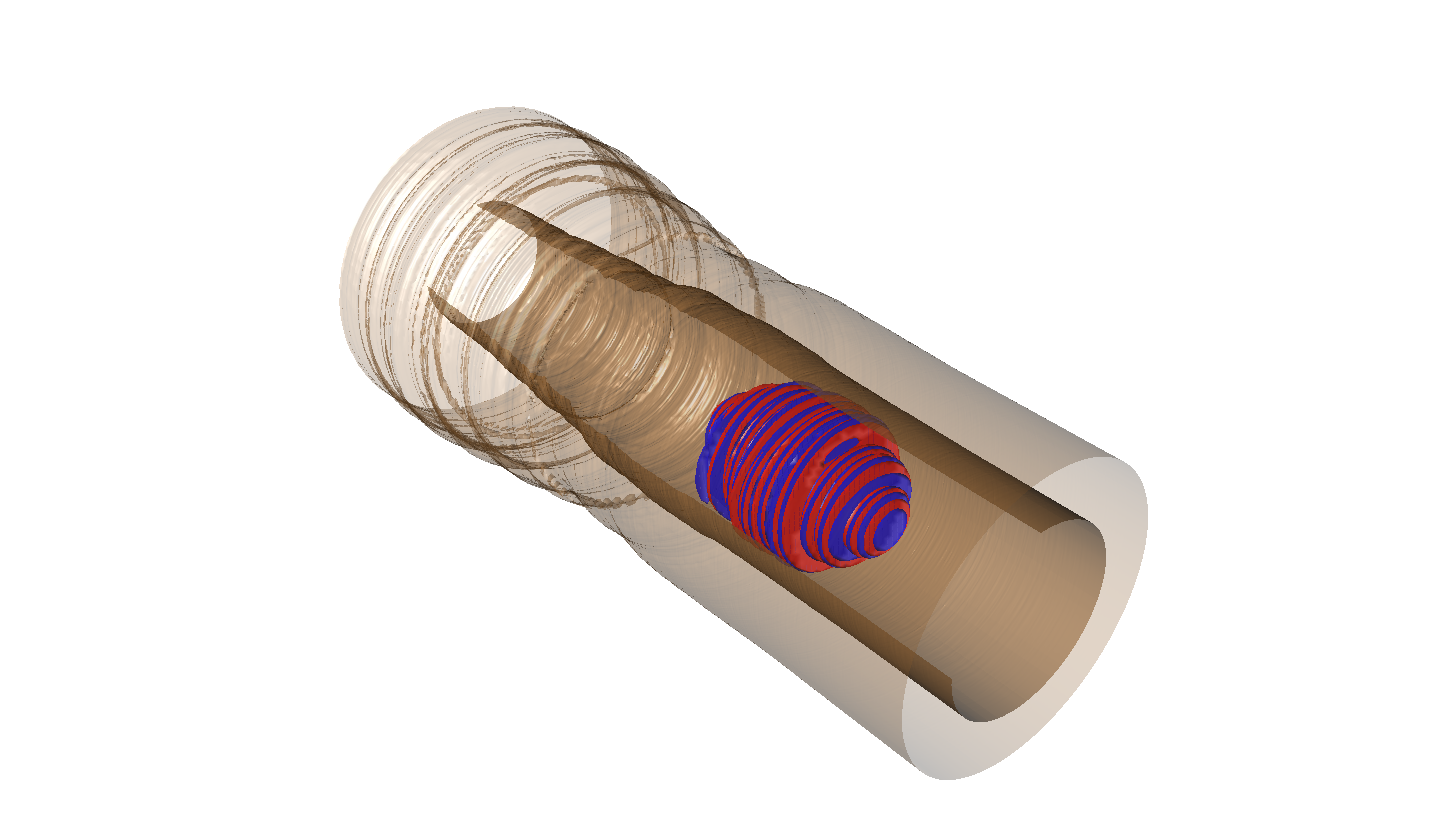New publication in PRL by GoLP members demonstrates high-charge alternative to laser-wakefield acceleration
A team of researchers from IST has recently published a paper entitled: “Direct laser acceleration in underdense plasmas with multi-PW lasers: A path to high-charge, GeV class electron bunches.” in the prestigious journal Physical Review Letters. The work was done in collaboration with researchers from the University of Michigan and University of California San Diego.
The most powerful lasers in the world can accelerate electrons to extreme energies, making them almost as fast as light. To accomplish this, it is necessary to ensure stable propagation of such laser pulses over tens of centimetres of plasma, which can be very challenging. By changing the acceleration strategy, the team has demonstrated how to reduce the typical acceleration distance to just a few millimetres and identified the possibility of accelerating a thousand times more particles than in other laser-based schemes. This micro-accelerator holds a potential to decrease the cost and size of building a lepton accelerator, and opens pathways to applications in medicine, industry and fundamental physics. Laser-accelerated electrons emit high-frequency light invisible to the human eye, which can be used to improve the quality of medical imaging, as well as activators in radiotherapy for more accessible cancer treatment. If the frequency of the light is sufficiently high, it can be used further to create electron-positron pairs through quantum processes. These exotic states of matter-antimatter are present near astrophysical objects like neutron stars and could be replicated in laboratories on Earth for fundamental study of collective effects in extreme plasmas.

A laser pulse propagating through plasma. As it propagates, it accelerates electrons close to the speed of light.
The studied acceleration scheme is called direct laser acceleration (DLA). It is present when extremely strong laser pulses propagate through gaseous plasma and transfer its energy of the transverse oscillating electric field directly into electrons. The importance of the recent study is the understanding of the transverse dynamics of accelerated electrons and the connection of oscillation amplitude to the maximum energy that can be achieved. Large-scale particle-in-cell simulations performed on supercomputers in Spain (Marenostrum) and in Finland (LUMI) demonstrated that this understanding can lead to the maximum energies of accelerated electrons in order of several GeV with currently existing laser. So far, it was expected that the electrons accelerated by the direct laser acceleration can reach few hundreds of MeV at best. However, simulations show that around 20 percent of laser energy can be transferred into multi-GeV electrons.

Trajectories describing the motion of laser-accelerated electrons (transverse position versus transverse momentum). The style reminds the famous traditional tiles decorating the buildings of Lisbon called Azulejos.
The most established laser-based acceleration scheme called laser wakefield acceleration (LWFA) utilises the field of a plasma wave generated by the propagating laser pulse and can accelerate hundreds of pC of charge in several centimetres. The DLA scheme has a potential to load thousand times higher total charge (hundreds of nanocoulomb) and accelerate it in just a few milimeters. The LWFA scheme is often described as being similar to situation when a surfer gains an energy from the wave created behind the boat. Since in the DLA regime the energy transfer is directly from the laser to electrons, no wave is necessary for the energy transfer and the surfer can comfortably sit on the jet ski and accelerate to high energies in much more efficient manner.








